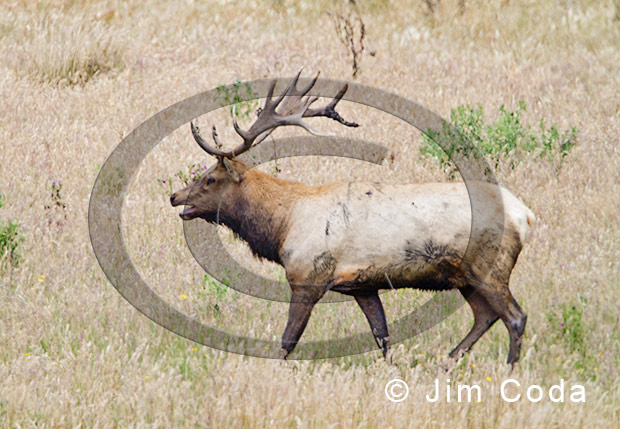Bull Tule Elk After a Fight

I wrote this post at the same time as the previous one. The point of this one was going to be to show how the bull in that post looked after an apparent fight. In looking over the draft of this post I now realize this isn’t the same bull. This bull’s antlers are “palmated,” especially the right one. Furthermore, I don’t see any baling twine. I guess I jumped to the conclusion that it was the same bull because this big bull was returning to the same 8 cows that I saw the previous bull with in the same spot an hour before. In view of the fact that this is the one returning to the harem, it appears he is the dominant bull in this area.
He was limping very noticeably which seemed to be due to an injured left shoulder. The area behind his lower left shoulder seems devoid of any hair. His left flank may also show evidence of a fight. He was panting heavily for the 10 to 15 minutes I observed him and his mouth was open almost all that time. I assume this bull was in a fight with the bull in the previous post. Even though he was showing signs of stress from what I presume was a fight, he still checked out a couple of cows that must have been close to being ready to mate. Being the dominant bull is a lot of work and leaves the big bulls in a weaker state when winter arrives. Point Reyes is a pretty safe place though for a weakened bull elk. It’s a lot tougher in Yellowstone with the low temperatures, the snow and the wolves.







